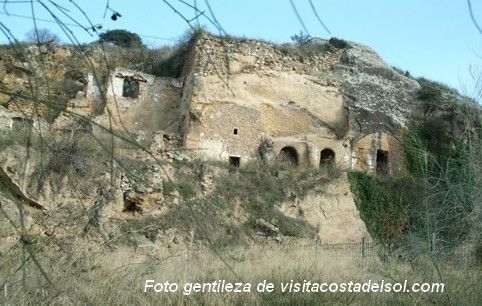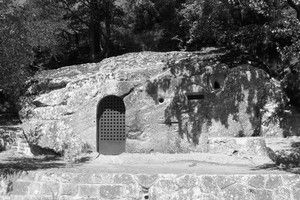Index of files of monuments
SANTA MARIA DE VALVERDE
Hermitages - 9th Century - Cantabria
Rock church, still used as parish temple, carved in a sandstone rock, possibly from the Visigoth period and reused since the first repopulation. Subsequently, a belfry was added and recently it is covered by a wooden roof to protect it. With three accesses, its interior, which has two naves of different structure separated by a triple archery on square pillars, finished in also different headwaters, one simple with a triumphal horseshoe arch and the other triple. All the spaces are covered by vaults carved into the rock. On the same surface on which the church is excavated there are some twenty medieval tombs and there is another group south of the church.
Santos Justo y Pastor
Hermitages - 10th Century - Palencia
SANTOS JUSTO Y PASTOR (R)
Hermitages - 10th Century - Palencia
Construida en el siglo X u XI por mozárabes huídos del Islam, la Iglesia de los Santos Justo y Pastor es el mejor ejemplo del eremitismo rupestre español. Su anómala orientación N-S, va acompañada por el hecho de que, el templo en sí, está labrado para dar la sensación a quien lo visita de que pertenece al estilo románico de la época, gracias a elementos tales como su falsa bóveda apuntada, sus arcos fajones y sus columnas adosadas. En conclusión, una verdadera obra de arte.
VILLAESCUSA DE EBRO
Hermitages - 7th Century - Cantabria
VILLANUEVA DE ALGAIDAS
Hermitages - 9th Century - Málaga
Cave ensemble excavated on a rocky headland. It consists of two rectangular caves not connected with each other, in which the western side was closed by masonry walls. The larger one, oriented towards east, must have been the church, with a single nave covered with a barrel vault, with a semi circular arch surrounding the apse and two small lateral compartments. The other cave, much smaller, could have been a hermit cave.
VIRGEN DEL CARMEN DE CADALSO
Hermitages - 8th Century - Cantabria
Small hermitage carved on the rock that consists of a nave and a rectangular apse separated by a triumphal semicircular arch. On account of its features it may have been a Visigothic hermitage from the period of St. Millán de la Cogolla or maybe one of the multiple hermitage centres created in the valley of Valderredible during the resettlement.
- « Previous
- 1
- 2






